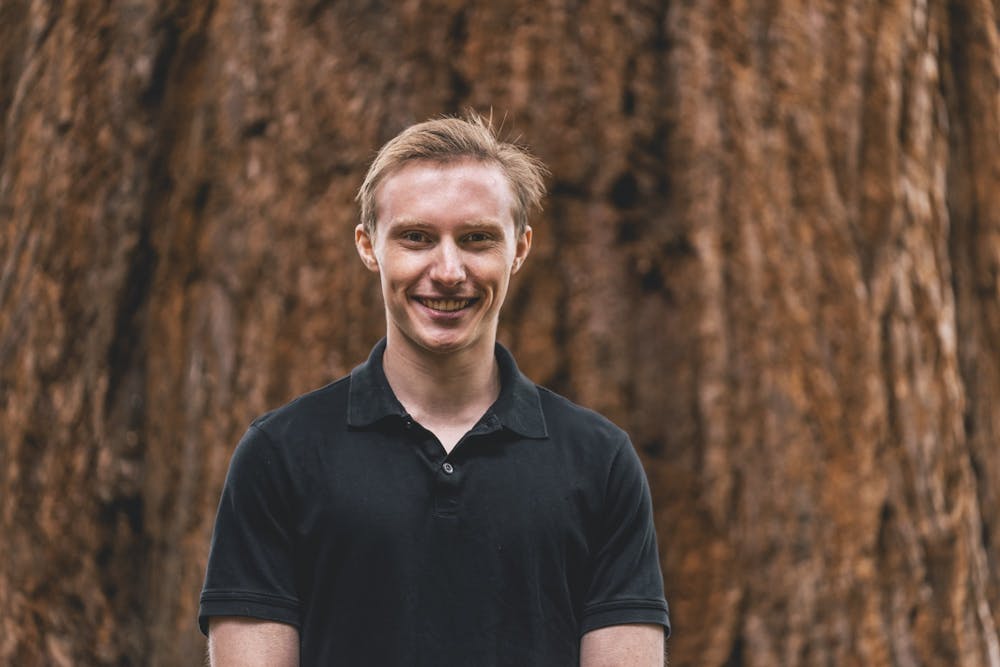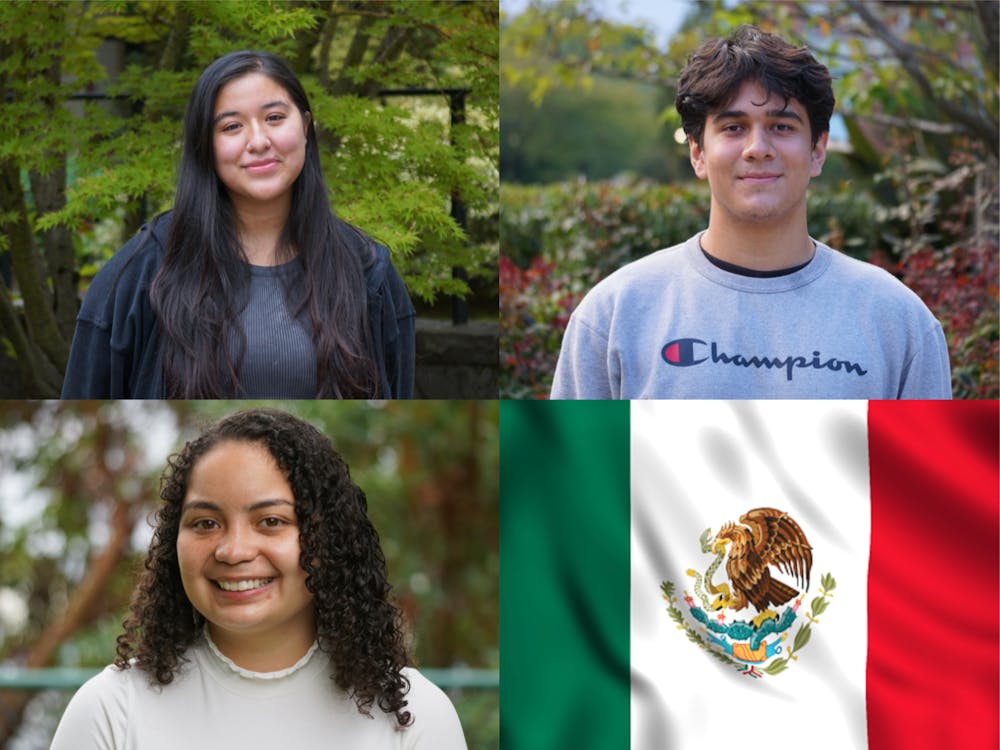I spent my entire childhood living next to a graveyard. It’s a very nice graveyard — tall trees, windy paths, hillsides and relaxing benches. If you stand on the side facing the East you will see beautiful views of the city. Being in the graveyard was peaceful. Somedays I would sit there and watch the world move around me, listening to the honks, yells and alarms of civilization.
In the graveyard, I felt I had escaped from the city’s chaos. It was one of the only places where life really slowed down. This silence I found was there simply because I was usually the only one – living – ever there.
One summer, I led a community service project to clean the gravestones of forgotten veterans in the cemetery. It was easy to find these gravestones because so many of them were grimey, overgrown, and some were illegible. When I first proposed the project to the cemetery manager, her response was surprisingly negative.
She informed me that our efforts to clean the gravestones will most likely go unnoticed. The maintenance of gravestones is the responsibility of the deceased person’s loved ones, and typically graves were overgrown because no one visited them any longer. In fact, some may never have been cared for given a variety of circumstances. Regardless of these facts, we proceeded with the service project to honor those forgotten veterans.
While I was proud to clean the veterans’ gravestones, the project got me thinking about cemeteries in general. While I understand the historical, religious and even emotional purpose for cemeteries, I wonder if the way we honor the lives that have passed before us is the best way for our future?
This precious land is more valuable than we think. While the living demand ample space, more and more people are dying simultaneously. This leads many cities to rush for more land for cemeteries, on top of the acres and acres they already have. As conversations of an overpopulated world today, many worry that there isn’t space to hold everyone – alive or deceased. I keep asking myself, should the deceased be prioritized for space over those still living? In addition, the land used for cemeteries must be heavily maintained with tons of water, fertilizers and pesticides. All of these resources are put into maintaining land that is rarely used by the living.
In addition to space and land use issues of cemeteries, the process to bury a body is extremely harmful to the environment. To bury a body (as opposed to other methods such as cremation) the body is preserved. This process is known as embalming – pumping countless chemicals into a body to delay the rate of decay, for the odd purpose of viewing the deceased. These embalming fluids never degrade, so when the bodies rot in the ground, chemicals like arsenic are deposited into the soil and can end up in groundwater.
In the early 1900s, arsenic was banned from embalming fluid. However, because it lasts forever, it still is found in water years later. A 2002 U.S. Geological Survey in Iowa City found arsenic levels three times higher than the federal limit near an old cemetery. Another main chemical used is formaldehyde, of which more than 800,000 gallons annually is put into the ground along with our deceased.
Once a body is embalmed, it is typically placed in a casket. Caskets themselves and the materials used to reinforce them use significant resources. Caskets use enough wood in one year to create 4.6 million single family homes. Around 115 million tons of steel is used for caskets and 2.3 billion tons of concrete for burial vaults as well.
Then, once a body is embalmed and placed in a casket, there is travel associated with it and often at great distances. This need to transport a body negatively impacts the environment.
With the impact in mind, what purpose do cemeteries serve? Well, it may be to remember those loved ones that touched our hearts. Provide a special place where we can reach them. I believe this purpose is not served anymore, the original goal of cemeteries is no longer achieved today.
When researching how often people regularly visit gravestones, lots of numbers arise on how popular famous people’s graves are. Millions and millions of visitors find it meaningful to stop by Michael Jackson’s grave each year. Weird to think that these spaces of remembrance and peace have become a tourist trap over anything else. Becoming tourist hotspots definitely contradicts the assumed purpose of cemeteries. How many of the million tourists really “loved” Michael Jackson?
Some graves are powerful in that they represent something much bigger, like Martin Luther King Jr., Anne Frank and Ruth Bader Ginsburg’s graves. They bring out motivation, remembrance and sorrow in people worldwide. They represent much more than just themselves. Those graves will continue to do that forever. Having a physical gravestone in these cases could be justified, but even then, it is not needed. Like with all other lives, there are even more powerful ways to keep their lessons alive. In the case that graves are kept for these people, these examples still do not justify burying every single human.
So what should we do to honor and remember those who have passed before us?
There are other phenomenal methods for remembering the dead that also protect our planet. We can create other spaces to mourn, grieve and remember those who have died. Several years ago when my grandpa died, my family gathered and we released his ashes into a river he loved. It was a magical, beautiful and cherished day. I am glad we remembered him that way. Instead of buying a casket, a gravestone and burying him in a cemetery that quite frankly I probably would have never visited, we cremated his remains.
But even this traditional cremation method we used isn’t environmentally friendly either. It releases toxins into the air and creates an ash that can’t decompose back into nature. On average, one cremation produces 534 pounds of carbon dioxide.
Other methods adopt a more natural way of life, where the bodies enact their normal decomposition. Some examples include burial pods where the body fuels a tree to grow. There are cremation methods that send human remains underwater as a reef ball, which provides a home for marine life. Straying away from traditional flame cremation methods, there are also water-based cremation methods which are more natural.
These methods aren’t the only option. If one really wants to be buried, consider a green cemetery. Green cemeteries extend beyond just reducing the bodies’ waste. Bodies in these green cemeteries slowly and naturally decompose and restore the land above. Some green cemeteries have no gravestones, so they can be enjoyed without even noticing the bodies below.
Death is a unique experience. It is natural, unavoidable and will happen to all of us. Yet it remains a taboo, sensitive and rejected subject. Let’s change the way we talk about death — not the coping, gathering, remembering and learning from death. Those are natural reactions which in no way are related to shoving the chemical-infused body underground after staring at it one time. So, let’s change the burial tradition. Doing so would drastically help the environment, improve life for those still on the planet, and create a brighter future for those to come.
Marek Corsello is a photographer for the Beacon. He can be reached at corsello22@up.edu.
Have something to say about this? We’re dedicated to publishing a wide variety of viewpoints, and we’d like to hear from you. Voice your opinion in The Beacon.








